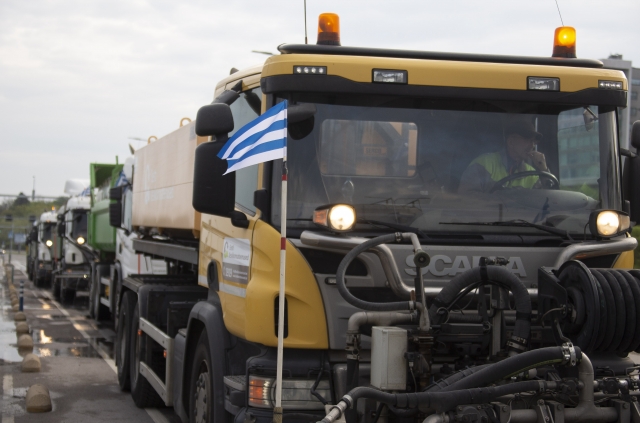Tallinn’s spring cleaning has begun
Tallinn started its spring cleaning this week, with the work lasting at least a month depending on weather conditions. The first areas to be cleared are the main streets, bicycle lanes, sidewalks, pavements and public transport waiting areas, where debris and dirt accumulated over the winter will be removed. Spring cleaning will end with a major street wash.
“Despite last week’s fluctuating temperatures, the snow has melted enough to start the spring sweeping of roads and streets. Clean urban space is important for the health of us all,” said Vladimir Svet, Deputy Mayor of Tallinn for environment and public works. “The first thing to be cleared will be granite sieves and winter debris from main streets, cycle paths, sidewalks, pavements and public transport waiting areas. As of earlier this week, more than 700 tonnes of sweepings and 32 tonnes of municipal waste have already been collected and removed, and more than 250 cubic metres of water have been used for wet cleaning. The city-owned roads, car parks, bicycle routes, green areas and public transport stops should be in order by the end of April.”
The city’s contractors will have a fleet of 50 units of machinery out for spring cleaning, including vacuum cleaners, sweepers, multi-purpose tractors, dumpers and scrubbers. In addition, another 30 handyman brigades with 70 people will clean roadside green areas, crossings and safety islands.
The gutters have to be cleaned several times to get rid of the dirt accumulated over the winter. At the same time, winter debris, sweepings and other rubbish are cleared from roads, stairways, public transport stops, bridges and viaducts and other road structures. Roadside green areas will be cleared of organic waste and winter litter exposed with melting. Contractors in the districts will start clearing roads and side streets within the districts, but as there is still occasional snow and ice on these roads, work will start where possible. Once the initial spring cleaning has been completed, street sweeping can start across the city.
Vladimir Svet noted that the City of Tallinn has been raising awareness about the harmful effects of studded tyres for years, but 62% of drivers still prefer studded tyres. “Studded tyres cause abrasion of the road surface, resulting in sand piles on the sides of the streets, forming fine dust that is dangerous to health. On average, between 3,500 and 5,000 tonnes of loose pavement material is collected from the city’s roads every spring, some of which is deposited as dust on landscaping and buildings,” said Svet.
It is the responsibility of the property owners to collect the granite sieves from the pavements adjacent to the property and to clean up the green areas and car parks on the property. As the city’s cleaning rules require that debris, dirt and dust are not transferred from the property to the driveway, pavement and neighbouring properties, Mr Svet urges owners to ensure that pavements are cleaned before the driveways are cleared. “This way, the wind will not carry dust and dirt onto the already cleared driveways and the city air will be cleaner.”
Road damage and potholes caused by the winter are now being repaired around the clock. More extensive repairs can start when the average daily temperature rises to plus five degrees and the asphalt plant can be started.

